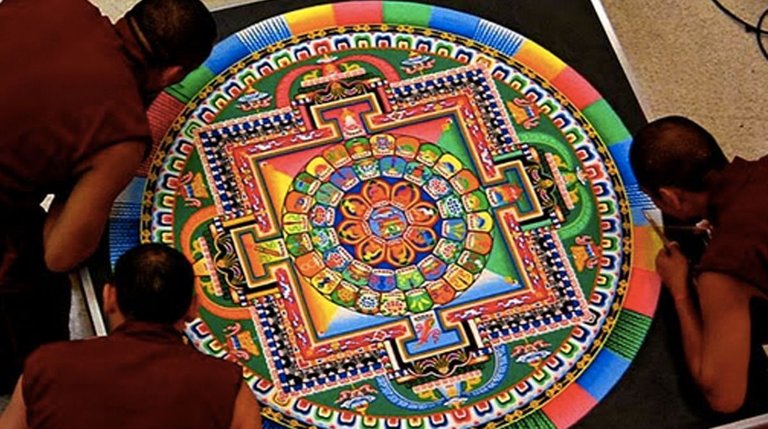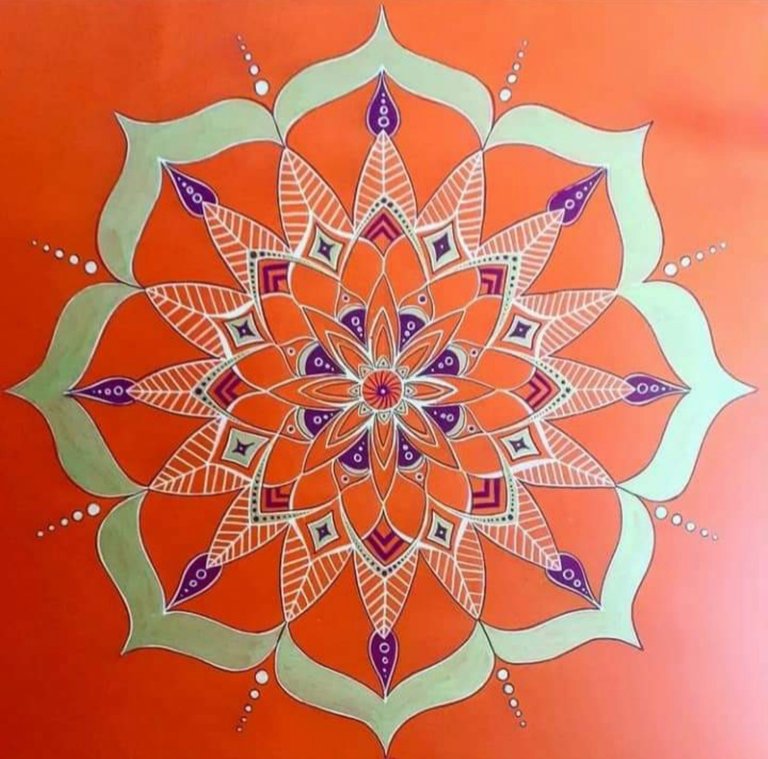Origins of the mandala
The word "Mandala" comes from the ancient Sanskrit language and means "sacred circle".
It is originally a symbolic object representing the universe that devotees contemplate while meditating.
Originally, the detailed geometric patterns were used by Buddhists to perceive truths about the universe, and a symbol of one's own inner existence and relationship to the outer world.
The notion of mandalas is also found in Celtic culture, for example, where their symbolism reflected nature and its energies; these mandalas evoked the fact that the whole of the plant, mineral and animal world contained spirits with which humans entered into relationship.
Note that there were also forms of mandalas originating from the Christian religion or among the Amerindians and in many other civilizations.

the mandala of today
In our western world, it was the psychoanalyst Carl Jung who, at the beginning of the 20th century, introduced mandalas as a way of exploring the unconscious.
He invited his patients to draw circles in a notebook, representing their inner thoughts.
"The Mandala is the self, the whole of the personality, which is normally harmonious. ("My Life": Memories, Dreams and Thoughts: Carl Jung)
The mandala remains today a tool for contemplation, meditation, self-knowledge and representation of the universe.

www.facebook.com/ewahee.macrame

www.facebook.com/ewahee.macrame

www.facebook.com/ewahee.macrame
See you tomorrow, my next article will talk about the symbolism of shapes and colours in the mandala!
Enjoy
Congratulations @ewahee! You have completed the following achievement on the Hive blockchain and have been rewarded with new badge(s):
Your next target is to reach 50 upvotes.
You can view your badges on your board and compare yourself to others in the Ranking
If you no longer want to receive notifications, reply to this comment with the word
STOPCheck out the last post from @hivebuzz:
Support the HiveBuzz project. Vote for our proposal!